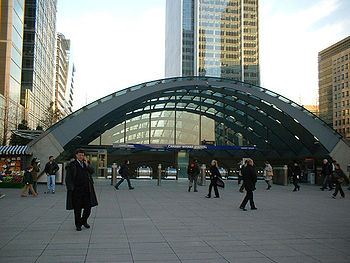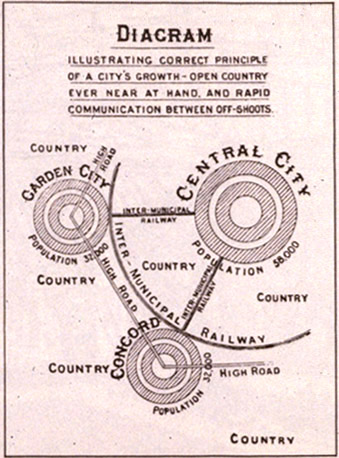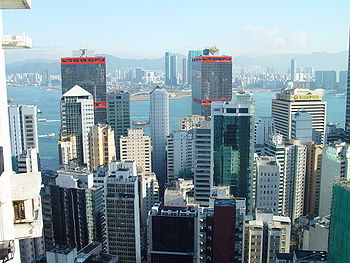 |
| Land-use planning in action (Photo credit: Wikipedia) |
 |
| Canary wharf tube station 2003 (Photo credit: Wikipedia) |
 |
| Singapore. Planning regions. (Photo credit: Wikipedia) |
 |
| Suburban development in Colorado Springs, Colorado (Photo credit: Wikipedia) |
 |
| A 1902 example of city planing (Photo credit: Wikipedia) |
 |
| An urban landscape: Hong Kong overlooking Kowloon (Photo credit: Wikipedia) |
Within a few years I had realized there were other things
in life, and as my so-called career (that is another story) developed, I became
a sort of half-assed expert on urban and social problems, writing a lot about
how cities were built and controlled under various social systems, and always
keeping in the back of my mind my preference for some form of socialism as the
only possible method by which the opportunities for most people in life could
be equalized.
My so-called expertise advanced at one point to the level
at which I was asked to speak at various conferences dealing with urban
planning, city development and so on. I was cruelly aware of my inadequacy when
speaking to a roomful of experts but I tried my best, and tried to make as many
jokes as I could --- usually rather
painfully obscure jokes --- to keep things lively.
Having written a newspaper series on the development of
Montreal’s suburbia in the late 1950s, and having examined things in
Scandinavia (whose use of public ownership of urban land particularly impressed
me), Holland (whose every inch of land seems to have been carefully planned) and
Britain (where in the 1960s I covered, and was hugely influenced by, a huge
World Congress of Architects, with representatives from 124 countries), my
inclinations led me when I returned to Canada in 1968 after eight years as a
correspondent in London, to write about Canadian cities in the late 1960s and
early 1970s, at which time I found to my surprise that most Canadian cities had
no idea what was happening in other parts of the country. So my first published
book was a sort of expanded version of those articles under the somewhat
pretentious title of The Future of
Canadian Cities, a title provided by my publisher, New Press, whose co-owner
Roy MacSkimming, showed such enthusiastic support for my work that he launched
me into book-writing, that has eventually led to some seven titles on various subjects.
Once again I was cautiously aware of my
inadequacies on the subject, and I remember the scorn with which the book was
reviewed by at least one of the panjandrums of Canadian planning. My only
defence could be that it wasn't intended for the experts in the subject, but
for the ordinary guy in the street who might be interested in what was being
built around him.
Eventually, when I had embarked by accident on a career in
documentary films, I was entrusted with the direction of a film intended to be
screened at the opening of the UN Habitat conference in Vancouver in 1976. In 1975 my wife and I decided to retire to
New Zealand, and I remember that part of the decision came from my feeling of
inadequacy before the task of making that film. I returned from New Zealand twice
in the following 12 months, and on one of those visits conducted interviews for the NFB with leading
world authorities attending the Vancouver conference. (My main memory from
these interviews is that in one of them, the fellow I was interviewing, acknowledged
to be the world’s leading expert in housing for the poor in Latin America, was
so dull that I actually fell asleep for a few seconds, during the interview.)
The subject I had chosen for the film that I ran out on was the huge migration
under way everywhere to urban areas. It was so relevant that people are
continuing to write books about it almost 40 years later, because alone, this
one global event, the migration to the cities, has overwhelmed almost every
heavily-populated nation.
When today Beijing is being planned as the centre of a
single metropolis that will contain 135 million people, it can easily be
understood how the scale of this
unimaginable migration has changed everything to such an extent that all my
previously hard-won knowledge seems now to be more or less useless.
In recent months The Guardian newspaper in London has been publishing
a remarkable series of articles on these new cities under such titles as Which
is the world’s most vulnerable city? Which
is the hottest city? Which is the most expensive city? And so on. Needless to
say the series has taken full account of the changes under way already as a
result of global warming, with its resultant increase in the level of the
oceans. For example, apparently St Mark’s Square in Venice, one of the world’s
architectural urban wonders, now is flooded 100 times in every year. (My main
memory of St. Mark’s is that while we were sitting there, a distressed young
mother who had lost her child came rushing by shouting, “Francois, Francois,
Francois!”).
What I learned from that international Congress of Architects
that I mentioned above was how the
social atmosphere in a country influences the style of architecture practised
therein. The Chinese and Russians, both preoccupied in 1960 with building
massively to house their millions of people, still recovering from the
devastation of war, were unashamedly building rather ugly residential blocks
full of tiny apartments in which families were grossly overcrowded. But at least
they had somewhere to live. But these were built in response to the need to
give homes to millions of people.
The Cubans, having not long before adopted a Communist
form of government, turned up with plans for and photographs of neat,
attractive, bungalows built by their government, houses that were made to look
attractive by being painted in a variety of pastel colours. Britain, which
after the war was also confronted with replacing destroyed neighbourhoods, had
built tower blocks that they regarded as the latest thing in sophisticated urban
planning, blocks surrounded by green spaces in which children could play safely
--- a form of housing that, with use, began to show deficiencies that have made
them almost a by-word in mistaken urban development. But it was no accident
that this form of development should have been practised by the British, who,
with their strongly Labour city councils following on the six years of Labour party government that ended
in 1951, rather stood somewhere between the left-wing and the right-wing
governments. The architects in the more conservative countries, on the whole appeared to be notable more for
their monumental architecture --- theatres, museums, universities and the like
--- than for that profession having been placed at the service of utility. The British, expanding their education system
on a democratic basis, had developed a form of school building known as CLASP,
which comprised prefabricated units that were easily fitted together in various
shapes, sizes and colours to lend an air
of quality to even schools that were
hurried into place in this way --- once again, the architectural styles being at
the service of the social system.
One of the central themes of the Congress was the exciting
and revolutionary new uses to which reinforced concrete was being put in Italy
and South America whose architects had
invented totally unprecedented spans of concrete roofing made up of thin layers
of concrete reinforced by networks of steel supports.
Many years later I had the opportunity to observe from
close up some of the planning principles observed as the Chinese Communist
regime rebuilt their cities so as to accommodate industries and the workers who
kept their factories humming over. Although,
as before, the actual apartment buildings were quite ugly, they were needed in
such vast numbers that their utilitarian air was hardly to be wondered at. And
in many ways the way of life imposed by the Communist regime on their city workers
seemed almost ideally suited to their
needs. Unlike in Canada or any
other western country, they did not go in for industrial parks on the edges of
cities, divorced from the living places
of the workers who need cars to get to work along highways the building of
which constitute one of the main costs of government. Nothing like that in the
Chinese cities I saw during a film-making visit in 1978. The factories were
built in the middle of the cities, as were the houses. Side by side. Hardly any workers lived more
than a half-hours’ bicycle ride from their place of work, and this use of the
bicycle as the primary means of mobility
appeared to be one of the things
that kept he population so fit. I
don’t think I saw a fat person during my three-month stay there. Every shift
change, morning and afternoon, the broad city streets were thronged with
thousands of people making their way to or from work. ……each factory had a
bicycle park capable of handling up to 4,000 bicycles --- an amazing system to
our western eyes, yet one that seemed to be run with remarkable efficiency.
I did think, at the time, watching how well the various
elements of this system jelled together, that if ever they discovered the automobile,
they would be in deep trouble. It never occurred to me that within twenty years
their cities would have been so completely transformed into glittering,
western-style conglomerations full of towering skyscrapers, the streets
surrounding them clogged with the inevitable traffic jams.
When I first began to interest myself in urban places, my orientation
came from the sort of knee-jerk leftist
thinking that included such ideas as urban renewal, by which was meant the
clearing away of slum areas and their replacement with modern apartments. The
inevitable accompaniment of such thinking was a sort of linear planning that
arose more or less naturally out of the destruction created by war. For example,
the city of Coventry in England, where I worked for a year, was badly damaged in the war, and their
leftist city council set out immediately the war was ended with a full-scale
reconstruction plan that they insisted on fulfilling year by laborious year. (I
should perhaps have mentioned that as a child I grew up in a country in which a Labour government
undertook a huge State housing scheme which provided for building cottages in
featureless streets and rows, many hundreds of which my building contractor
father obtained the contract to build in my home town. It never occurred to me
that these were anything but a good thing, designed to uplift the quality of
our common lives, and we were quite shocked when the renowned Welsh architect
Clough Williams-Ellis, who had constructed a fairy-tale village on the Welsh
coast, came to New Zealand and delivered a trenchant criticism of our beloved
State housing scheme. I remember that
our minister of housing, a working-class
man with limited education but a colourful vocabulary, responded, “We don’t
need to take lessons from any snuffling snufflebusters from the old country to tell us how to build
houses.”)
Just what has happened to these simplistic verities I
absorbed in my youth I have no idea. I
do know that in every country in which I have studied the matter, homes cannot
be built for the poorest people who need homes the most, without some form of
government subsidy. Some brave efforts have been made in Canada, some of them
right here in Montreal, in the 1960s and
1970s to prove that that was not so, but none of them really succeeded. Similarly,
many people with a social conscience who have found themselves owners of, for
example, hotels occupied by poor tenants, have vowed to improve the conditions
of life in the hotel, without forcing the tenants out. But to be best of my
knowledge, none of these schemes has ever succeeded: the inevitable consequence
of upgrading accommodations is that the people living at lower rents in the old
standards have not been
able to afford the higher rents for the upgraded places,
and have had to move elsewhere.
That may not be just, but who said life was just?
Don’t tell me I am reduced to such cynicism by my
experience of urban life. It’s probably just that, even in such small efforts as
these, the basic conditions of life assert themselves, those conditions that
have always bedevilled the quest for workable socialist solutions. If most of
the money is in the hands of the wealthy class, they are certainly not going to
volunteer to give it up so that poor people might be rescued from their misery. So how do we get our hands on some of their
wealth and put it to a more socially useful purpose? The only countries where I have seen that
coming even close to working is in the socially-conscious nations of Scandinavia,
whose extremely heterogeneous populations have been ready to pay half of their
incomes in tax, knowing that they can expect a better standard and quality of
life.
I’m afraid consideration of these knotty questions will
have to await another day.
No comments:
Post a Comment